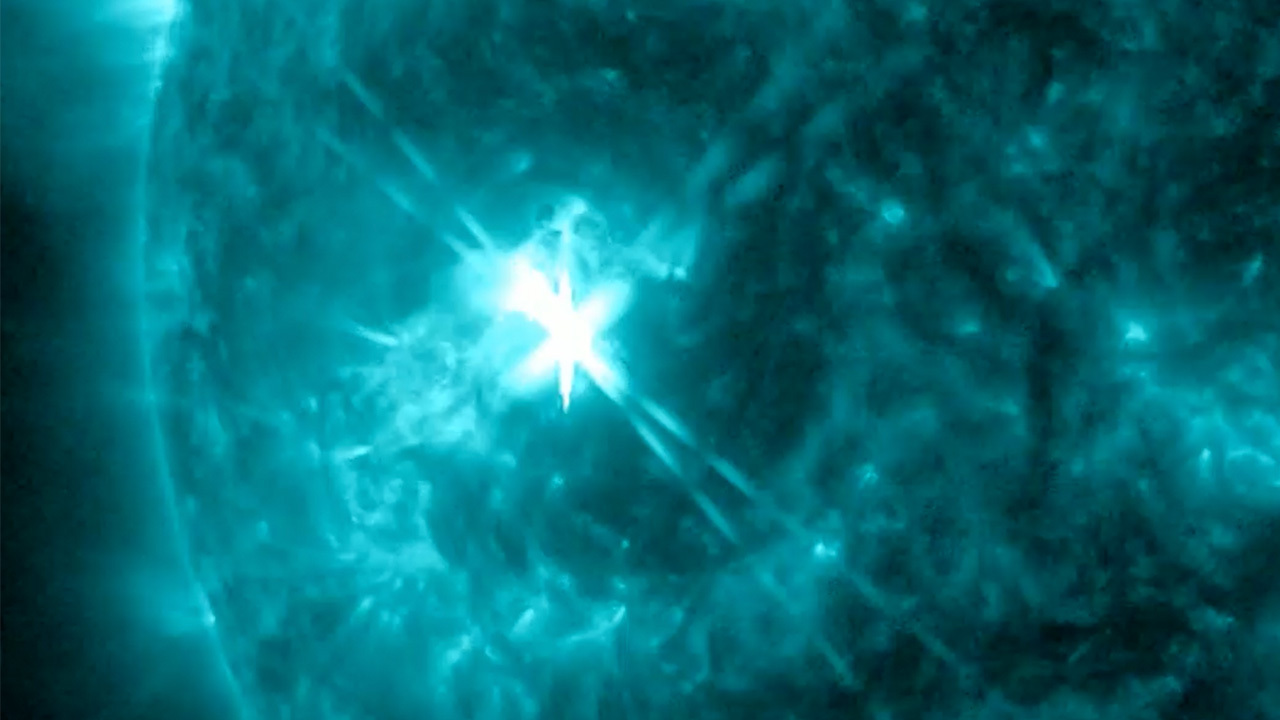The sun just erupted with a major X-class solar flare. Here's what it looked like on video.
The X1.1-class solar flare created a temporary radio blackout over South America.
A major solar flare erupted from the sun Saturday (Feb. 11), spawning a radio blackout for parts of Earth and setting the stage for more flares to come.
The huge solar flare, which registered as a powerful X1.1-class event on the scale used for such sun storms, peaked at 10:48 a.m. EST (1548 GMT) on Saturday, according to the U.S. Space Weather Prediction Center (SWPC) operated by NOAA. It originated from an area of the sun called Active Region 3217 and created a temporary radio blackout over South America, the center reported. NASA's Solar Dynamics Observatory captured stunning video of the solar flare.
"More flares are expected from this region as it moves across the sun creating occasional degradation of high frequency (3-30 MHz) communication," SWPC officials wrote in an alert.
Related: The sun's wrath: Worst solar storms in history
Solar flares are massive eruptions of charged particles on the sun and come in a variety of intensities, with the smaller A-class and C-class flares denoting relatively minor events while the stronger M-class flares can lead to amplify the auroras we see on Earth. X-class are the strongest type of solar flares. The strongest X-class flare ever recorded occurred in 2003 and registered as an X28 flare before it overwhelmed the space weather sensors measuring it.
Intense solar flares can also eject out huge amounts of solar material in what scientists call a coronal mass ejection (CME), which can fling out vast clouds of solar plasma away from the sun at speeds of up to 1 million mph. When aimed directly at Earth, the strongest solar flares and CMEs can interfere with communications systems, power stations and even endanger astronauts and satellites in space.
According to Spaceweather.com, which tracks space weather events, there was no CME associated with Saturday's X1.1 solar flare. There was, the site added, a CME spotted from a different event — an eruption of a solar filament from the sun's northern hemisphere.
Breaking space news, the latest updates on rocket launches, skywatching events and more!
That eruption flung a CME towards Earth that should reach Earth on Feb. 14 and could lead to more intense auroras, the site reported.
"Arctic sky watchers could get a light show for Valentine's Day," Spaceweather.com wrote.
Email Tariq Malik at tmalik@space.com or follow him @tariqjmalik. Follow us @Spacedotcom, Facebook and Instagram.

Tariq is the award-winning Editor-in-Chief of Space.com and joined the team in 2001. He covers human spaceflight, as well as skywatching and entertainment. He became Space.com's Editor-in-Chief in 2019. Before joining Space.com, Tariq was a staff reporter for The Los Angeles Times covering education and city beats in La Habra, Fullerton and Huntington Beach. He's a recipient of the 2022 Harry Kolcum Award for excellence in space reporting and the 2025 Space Pioneer Award from the National Space Society. He is an Eagle Scout and Space Camp alum with journalism degrees from the USC and NYU. You can find Tariq at Space.com and as the co-host to the This Week In Space podcast on the TWiT network. To see his latest project, you can follow Tariq on Twitter @tariqjmalik.

